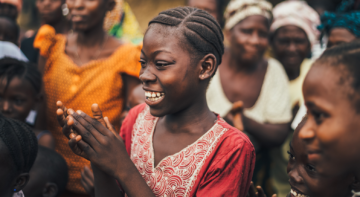Blogs

For a long time, Malawi’s economy has been agriculture driven. The sector contributes about 42 percent to the country’s gross domestic product (GDP). Due to this overdependence on agriculture, the country has had a fragile economy for over three decades as a result of poor rainfalls, drought and other climatic challenges.
Malawi has constantly relied on rainfall as the main water source for its agriculture. Due to climate change, the country’s productivity has been greatly affected. Irrigation as an alternative to rain-fed production has been underutilised despite having large scale irrigation projects such as the Greenbelt Initiative (GBI). The Greenbelt Initiative (GBI) sought to increase the level of agricultural productivity in support of the National Resilience Strategy.
Smallholder farmers have been encouraged to adopt irrigation farming, but challenges such as access to finance, affordability of irrigation equipment, quality of extension services and access to water have hindered farmers from venturing into irrigation farming. Implementing the right policies and interventions would propel this sector.
A study conducted by the Malawi Priorities a research-based collaborative project implemented by the National Planning Commission (NPC) with technical support from the African Institute for Development Policy (AFIDEP), and the Copenhagen Consensus Center (CCC), highlights the best ways of stimulating farmers to take up irrigation farming. The study focuses on two interventions as ways to increase the area for irrigation.
The extension services have faced challenges as they are inadequate extension workers to reach farmers and the need for proper training and mobility for outreach services. Extension workers need training and this would improve the services offered to farmers. The first intervention focuses on reorienting the extension services leading to the uptake of gravity irrigation by smallholder farmers. The study assessed the need to reorient extension workers and improve the provision of Agriculture Extension Development Officers (AEDOs) and lead farmers (LFs) to provide adequate and updated information on irrigation for the usage of smallholder farmers. The cost of these interventions is aligned with the costs associated with training and increasing the number of AEDOs, irrigation infrastructure and its maintenance and area of cultivation.
The second intervention highlights the provision of financial support and grants to smallholder farmers and estate farms for solar irrigation pumps as a means of addressing the challenge of the high cost of irrigation equipment. In this intervention, three main categories need to be addressed: (a) irrigation infrastructure and maintenance, (b) the cost associated with monitoring and management of the financing instrument and (c) the marginal change in costs associated with a greater area of cultivation.
The estimation of benefits is as per the first intervention: increase in output associated with irrigation during the dry season, and reduction in variability during the wet season. Overall, the emphasis of the research remains that both, the choice of irrigation technology and the choice of crop, are critical drivers of the return on investment, making strategic crop diversification a key component of any irrigation intervention.
The Malawi Priorities Project, is a research-based collaborative project implemented by the National Planning Commission (NPC), with technical assistance from the African Institute for Development Policy (AFIDEP) and the Copenhagen Consensus Center (CCC), highlights most cost-effective policy interventions that can support and help the nation.
Read the full technical report and policy brief here:
Cost-Benefit Analysis of Stimulating Farmer Uptake of Irrigation in Malawi – Technical Report
Cost-Benefit Analysis of Stimulating Farmer Uptake of Irrigation in Malawi – Policy Brief
Related Posts




